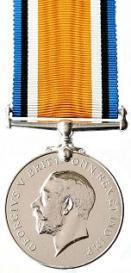CRANWELL, Charles
| Service Number: | 19180 |
|---|---|
| Enlisted: | Not yet discovered |
| Last Rank: | Private |
| Last Unit: | Army Medical Corps (AIF) |
| Born: | Kensington, South Australia, March 1899 |
| Home Town: | Not yet discovered |
| Schooling: | Not yet discovered |
| Occupation: | Labourer |
| Memorials: | Payneham Sydenham Road Methodist Church Roll of Honour |
World War 1 Service
| 28 Feb 1918: | Involvement Private, 19180, Army Medical Corps (AIF), --- :embarkation_roll: roll_number: '23' embarkation_place: Melbourne embarkation_ship: HMAT Nestor embarkation_ship_number: A71 public_note: '' | |
|---|---|---|
| 28 Feb 1918: | Embarked Private, 19180, Army Medical Corps (AIF), HMAT Nestor, Melbourne |
Help us honour Charles Cranwell's service by contributing information, stories, and images so that they can be preserved for future generations.
Add my storyBiography contributed by St Ignatius' College
Charles Cranwell was born a ‘Natural Born British Subject’ in Kensington, South Australia to his mother and father, Mrs Mary Cranwell and Mr Cranwell. Charles’ father passed away some time prior to his enlistment and war service (1).
On the 5th of April 1917, in Adelaide, SA, labourer Charles Cranwell enlisted for the First World War aged 18 years and 1 month, we can assume that he was born sometime during March 1899. He was ranked a private, and given the service number 19180, also indicating that he enlisted rather late during the war. Charles was placed in the Army Medical Corps, and was part of the September 1917 Reinforcements (2).
A profile of Charles’ appearance at this time stated that he was 5 feet 9 ¼ inches tall, weighed 127 lbs, and had chest proportions of 30 ½ - 33 ½ inches. He was also described to have grey eyes, dark hair, and a medium complexion (5).
As a part of the Army Medical Corps, Charles embarked from Melbourne, Victoria to Liverpool, England on board the HMAT A71 Nestor, on the 28th of February 1918. This took a little under two months, as he arrived in England on the 20th of April 1918 (5).
On the 21st of April, Charles’ unit proceeded to France Via South Hampton, where they marched in Ex England from the 5th of October 1918. Only 3 days later, Charles was taken on strength (T.O.S) to the 2nd A.F Hospital for duty. On the 31st of December 1918, Charles contracted bronchitis, recovering in a short 3 days. After his illness, Charles returned to his unit, the 1st Field Ambulance where he stayed for the remainder of his service (5).
Whilst serving in the 1st Field Ambulance, Charles would have been responsible for the ‘Second Line’ casualty evacuation from the ‘First Line’ Regimental Aid Posts (RAP) in each battalion. He may also have been sent forward to retrieve the wounded soldiers, where he would be coming under the same risks as the front line soldiers (2).
During his time serving abroad in the First Field Ambulance, Charles ran away from the war front. He stayed away for a total of 14 days, before being returned to his unit. Charles was sent to military prison, tried, and sentenced to 31 days without pay. Charles did not leave the war again until his discharge in October 1919 (5).
Charles was discharged sometime in October 1919, “in consequence of [his] termination of period of enlistment” at age 20. A profile of his appearance stated that he had grown in height by one inch, whilst his hair colour did not change, nor did his eye colour. It states that he had planned to be employed as a concrete worker following the war. Charles disembarked on the 5th of October 1919, and arrived back home in Australia only 25 days later aboard the H.T Main*.
By the end of his service, Charles had served over 2 years and 200 days, with over half of that time being abroad. Charles was awarded the “British War” Medal, as well as the “Victory” Medal. The “British War” Medal was awarded to soldiers by King George V in 1919 to commemorate the end of WWI, as well as the service given3. Charles was awarded the “Victory” Medal by Great Britain, as were all Australian at that time. This medal was awarded to soldiers to commemorate the victory of the Allied Forces over the Central Powers (4).
1:https://www.aif.adfa.edu.au/showPerson?pid=66256,
https://recordsearch.naa.gov.au/SearchNRetrieve/Interface/ViewImage.aspx?B=3441066&S=1
2: http://www.raamc.org.au/web/1fda/?History
3:http://www.defence.gov.au/Medals/Imperial/WWI/British-War-Medal-1914-20.asp
4:http://www.defence.gov.au/Medals/Imperial/WWI/Victory-Medal.asp
5:https://recordsearch.naa.gov.au/SearchNRetrieve/Interface/ViewImage.aspx?B=3441066&S=16&R=0
*no photos of this are available













